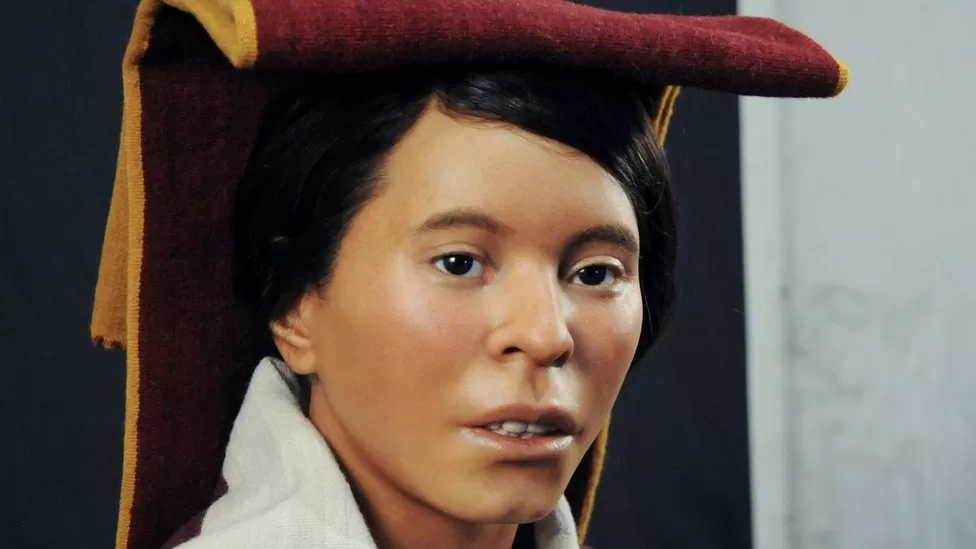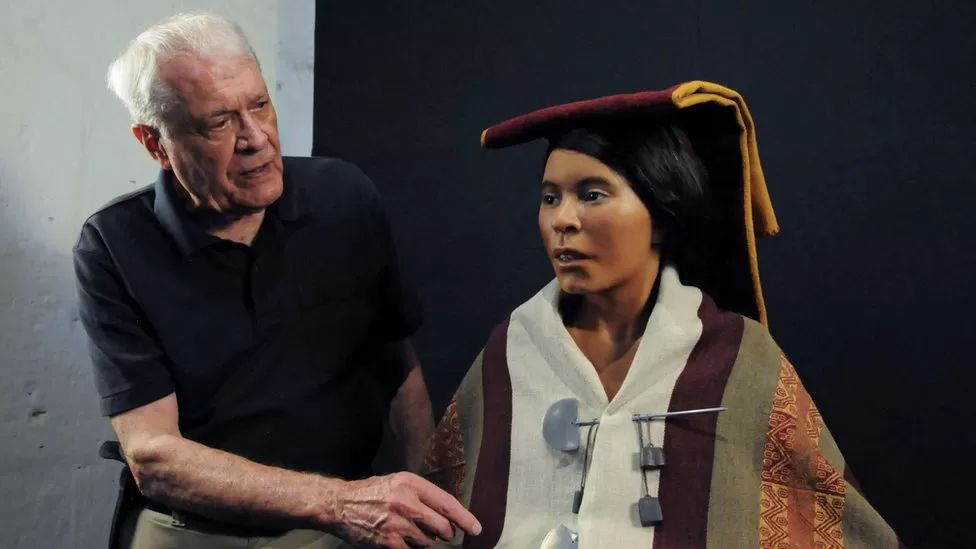Unveiling the Living Face of Peru’s Most Famous Mummy: Teenage Inca Sacrifice Resurrected
In a remarkable fusion of science and artistry, the visage of Peru’s beloved mummy, a teenage Inca girl named “Juanita” who was offered in a sacred ritual over five centuries ago, was unveiled in an astounding ceremony at the Andean Sanctuaries Museum of the Catholic University of Santa Maria in Arequipa. This silicone-made bust, portraying a young woman with striking cheekbones, ebony eyes, and sun-kissed skin, brings us closer than ever to envisioning the face of this historical figure.

eru's most famous mummy, a teenage Inca girl known as "Juanita" or the "Inca Ice Maiden,"-Source: AP
Johan Reinhard, the U.S. anthropologist renowned for discovering “Juanita” back in 1995 atop the frigid Ampato volcano, expressed his astonishment at this achievement. He had once resigned himself to never knowing the countenance of the “Inca Ice Maiden” while she was alive. “Now 28 years later, this has become a reality thanks to Oscar Nilsson’s reconstruction,” he gleefully acknowledged.

Oscar Nilsson, a Swedish archaeologist and sculptor specializing in 3D facial reconstructions of ancient humans, invested approximately 400 hours meticulously sculpting the face, a painstaking endeavor resulting in a lifelike representation.
Dagmara Socha, a Polish bioarchaeologist from the University of Warsaw’s Center for Andean Studies, shared insights into the intricate process that made this revelation possible. “The first step in achieving Juanita’s face was to obtain a replica of the skull. Subsequently, body scans, DNA studies, ethnological characteristics, age, complexion, and other anthropological data were all integrated into the facial reconstruction,” she explained.
According to anthropological studies, Juanita’s sacrifice occurred between A.D. 1440 and 1450 when she was just 13 to 15 years old. Standing at a height of 1.40 meters (55 inches) and weighing 35 kilos (77 pounds), she exhibited signs of being well-nourished. Tragically, a severe blow to the right occipital lobe, as revealed by a CT scan performed by researchers at Johns Hopkins University, is presumed to have been the cause of her untimely demise.

Johan Reinhard, who has unearthed over 14 Inca human sacrifices in the lofty Andes, including the chilling discovery of three children in an icy pit at Argentina’s Llullaillaco volcano, emphasized that this groundbreaking revelation has not only rekindled interest in Juanita but also provided critical insights into her life and the Inca culture she was a part of. “Now we can see what she really looked like, which makes her even more alive,” he remarked.
This unveiling marks a pivotal moment in the world of archaeology and serves as a testament to the power of collaboration between experts from different corners of the globe in bringing history back to life.

